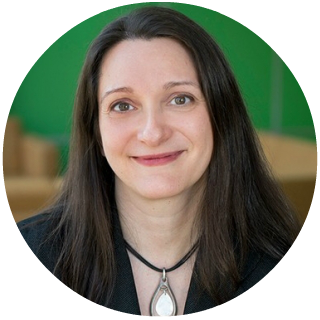
“Community impact versus scholarly impact: which matters most?”
As an engaged scholar who often works with communities, this question is as comforting to me as nails on a chalkboard. Posed this way, the question separates scholarship, or the core activities of academics, from the communities that universities, and university scholars, are integral parts of. More troubling, it frames the impact of scholarship as something distant from the public (read community) funds that significantly help to support academic enterprise. For me, community impact and scholarly impact both matter — a lot — and both require significant investment of time, intention, and energy to achieve.
My most formative experience as a doctoral student was when I received a scholarship from a national non-profit organization. The scholarship was important for obvious (and immediate) reasons — like my enhanced ability to pay tuition and to buy groceries, — but also because of the words that my mentor shared with me at that moment. He reminded me that those dollars had been contributed as small amounts by people who really cared and gave what they could in support of research; the funds were collected by canvassers who knocked door to door, or sat in small tables in malls and grocery stores to sell flowers and calendars, or participated in races, relays and other events to support a cause that was so very important to them. Then, he asked me to remember that fact when I made decisions in my research about how to use those dollars to generate knowledge that would have an impact on those people. They so badly wanted change. They believed it could happen. How would I honour that in my academic work? The sense of responsibility, of accountability to community beyond the requirements of excellence in scholarship, fundamentally shaped the kind of academic I would become.
So, let’s return to the question at hand: what kind of impact matters most? First, let’s ask: what is impact? The dictionary offers several definitions, including “influence; effect” and “the force exerted by a new idea, concept, technology, or ideology.” In this light, we could understand the key differences between scholarly impact and community impact as the audiences/settings to be influenced, and the potential uses of the ‘ideas or products’ that emerge from scholarship.
Simply, scholarly impact is most-often recognized as quantifiable contributions to a discipline or body of knowledge. The academic rewards system assesses impact using metrics such as number of publications in high quality peer-reviewed journals (or books written), dollars received in peer-reviewed grant funding from competitive sources, number and quality of students supervised (and the types of employment they secured after graduation), teaching evaluation scores, patents obtained, creative works produced, or contributions to university, peer-review, or other service committees. There are numerous other examples, but these few illustrate that the impact of an academic’s work is measured through products that take particular forms most persuasive to and adjudicated by other academics.
Yet, Ernest Boyer (1996) reminds us that “just one hundred years ago, the words practicality and reality and serviceability were used by the… most distinguished academic leaders to describe the mission of higher learning[1]” and that “abundant evidence shows that both the civic and academic health of any culture is vitally enriched as scholars and practitioners speak and listen carefully to one another.”
This premise underpins all areas of scholarship: research, teaching, and service. In a nutshell, a scholar’s connection to community (in any way that a community can be defined) enriches their pursuit of knowledge, their ability to impart that knowledge to learners, and in the change, or influence, that sharing knowledge contributes to society. We can then understand community impact to be the effect of knowledge beyond the academy, to promote positive change on the quality of peoples’ lives. This can, and should, take many forms and requires the same attention to audience interests, message framing, and mode of communication as would any grant proposal or manuscript. For the richest community impact, Boyer’s conversation should begin long before research (or teaching or service) outcomes are produced, and in fact, should be one impetus informing the entirety of the academic enterprise.
The University of Alberta recognizes, values, and celebrates all forms of community impact. The Community Connections Awards“honour those individuals and groups who have embodied the U of A’s promise to “uplift the whole people” by volunteering to share their expertise, time, and energy for the benefit of the public good”. Each year, I am newly inspired by the amazing diversity and deep significance of the community impacts that are shared by recipients of these awards, which include scholars as well as members of the broader University of Alberta community.
[1] Emphasis as occurred in the original source
Sources
Dictionary.com. Search term “impact”; accessed January 20, 2018
Boyer E.L. (1996). The scholarship of engagement. Bulletin of the American Academy of Arts and Sciences, 49(7):18–33.
Candace Nykiforuk — Associate Professor and Director of the Centre for Healthy Communities

Candace Nykiforuk, PhD is an Associate Professor and Director of the Centre for Healthy Communities with the School of Public Health. She holds an Applied Public Health Chair in Public Policy and Communities Environments funded by the Canadian Institutes of Health Research in partnership with the Public Health Agency of Canada and Alberta Innovates. She was deeply honoured to be the 2015 recipient of the Community Connections — Community Scholar Award.